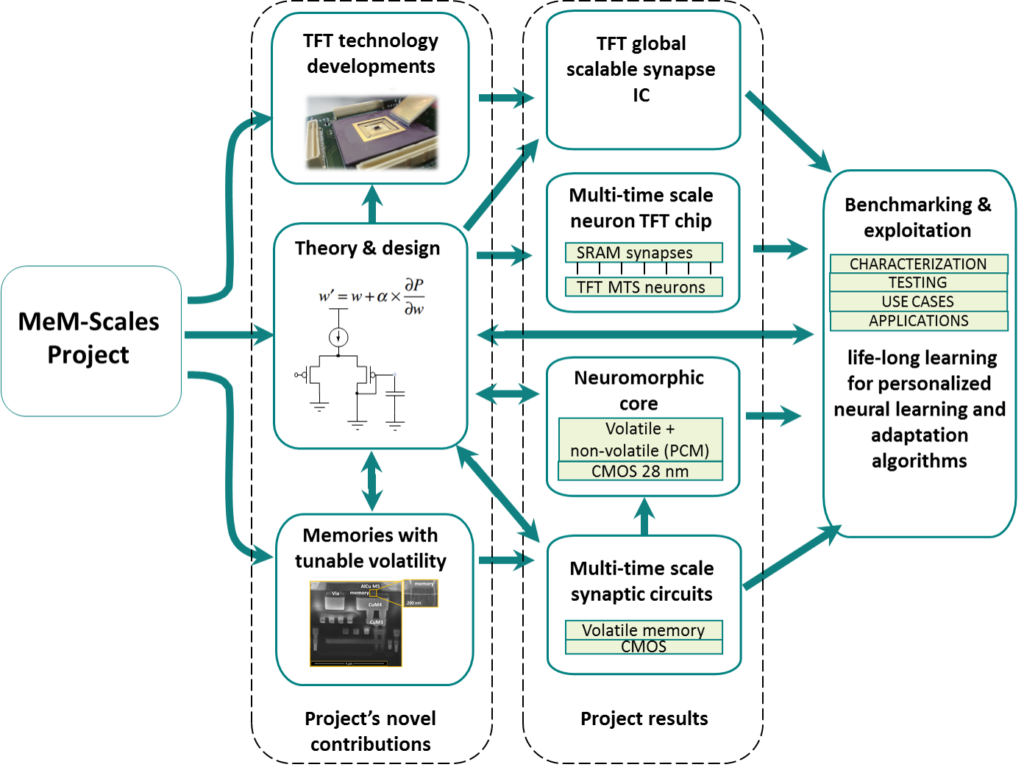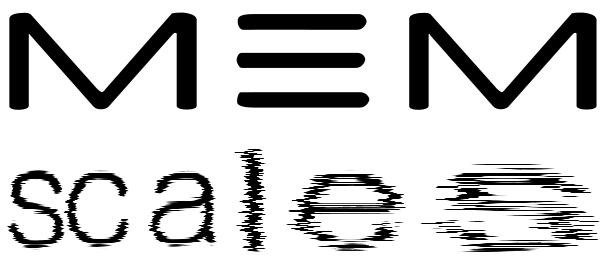Objectives
Our scientific and technological objectives can be summarized as follows:
- To study the theory, and develop algorithmic and architectural innovations for realizing adaptive and robust multi-timescale neural processing on mixed-signal analog/digital neuromorphic processors comprising both volatile and non-volatile memory devices to implement the synaptic circuits and TFT-based neurons.
- To develop novel hardware technologies that support on-chip learning with multiple time constants, both for synapses (volatile memory option combined with non-volatile memory, Electrochemical metallization, vacancy-type oxide-based memories, and Phase Change Memory), and neurons (TFT option exploration, plus integration with other devices).
- To study and develop an ultra-low-power, scalable and highly configurable neuromorphic computing processor capable of online, life-long learning for personalized neural learning and adaptation algorithms.
- To validate and demonstrate the project developments on realistic fully personalized edge application cases (by both simulation and board prototyping).
Workflow

Target application domains
In addition to the earlier NeuRAM3 EU project analysis on the ECG healthcare analysis, also several other application studies have been performed, in 2 different major domains namely (1) autonomously navigating and moving like robots, drones and even cars and (2) sensor-based healthcare and life-style systems such as smart patches, smart wristbands, smart glasses and even smart shoes.
A table with summarizing requirements for time scales based on these studies is provided below.
Purpose Time scales
Immediate state/threats msec to second
Planning/monitoring across short periods seconds to minutes or hours (intra-day)
Tracking evolution over longer periods days to years
It can be concluded that we need to potentially span up to 9 orders of magnitude from milli-seconds up to years.
